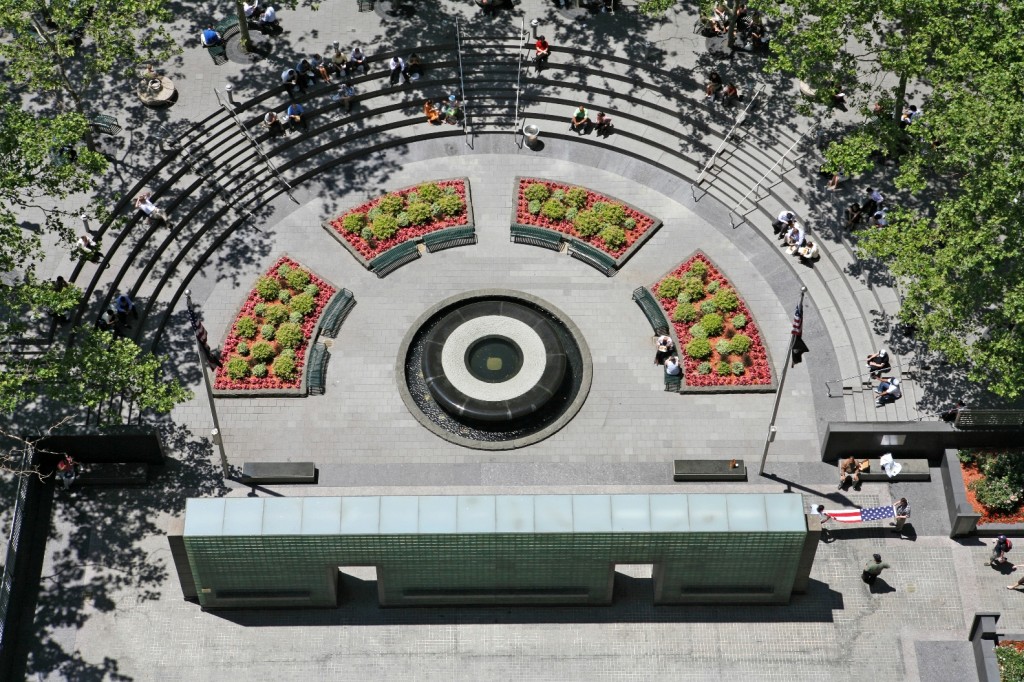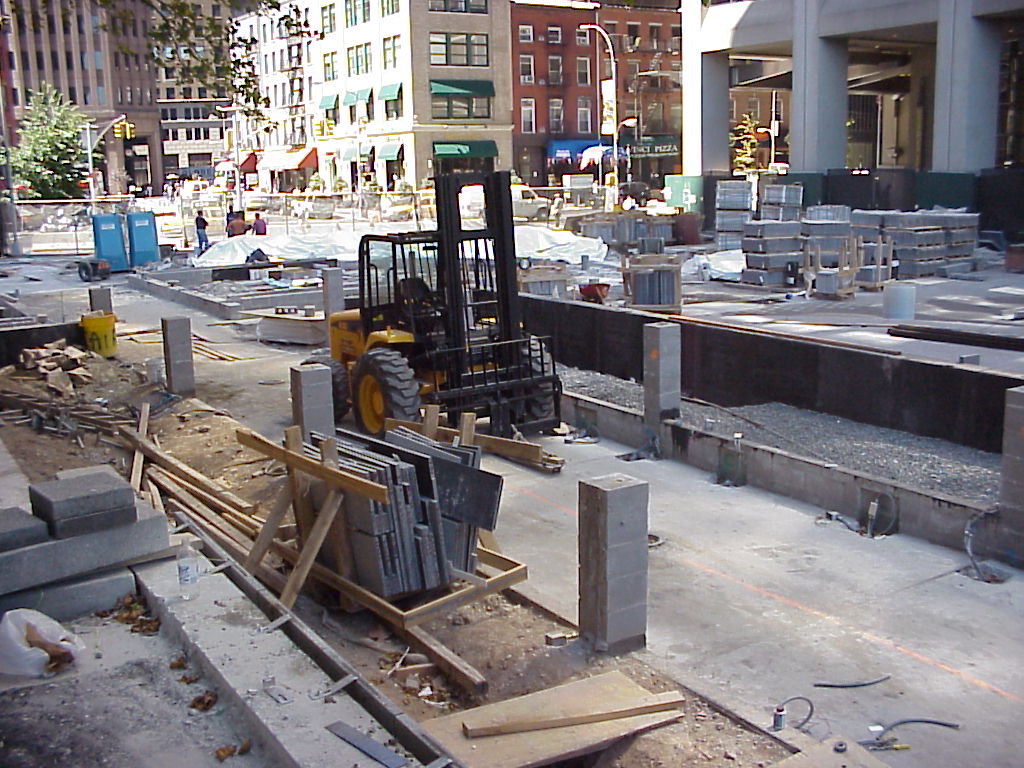The Friday before Veterans Day 2001 was selected for the rededication of the reconstructed Vietnam Veterans Plaza.
Two thousand veterans and their families, including 600 relatives of New York City’s 1,744 sons and daughters who lost their lives in Vietnam, were on hand for the event. They listened in rapt attention to speakers who praised those who answered their country’s call, who reminded them of the need to remember what happened in the jungles and the rice paddies of Southeast Asia during the long years of the Vietnam War, and who drew parallels with those emergency responders who died during the September 11th attacks on the Twin Towers and the Pentagon.

The story of the Memorial and the surrounding plaza reflects the sustained efforts of many individuals and groups to provide and maintain a valuable and overdue tribute to the men and women who served in the Vietnam War.
The Process
In 1982, New York City Mayor Edward Koch established a 100-member commission to create a memorial that would reflect the conflicting emotions of the Vietnam War (as well as a “living memorial” to assist Vietnam veterans in need of jobs). To fill the glass block wall of the design that was chosen after a wide-ranging competition, the commission sought words written during the years of the Vietnam War. Some 3,000 letters, poems and diary entries were submitted from across the country, and excerpts from more than 80 of those submissions were chosen for the memorial. Over 200 writings were included in the book Dear America: Letters Home From Vietnam, which inspired the acclaimed HBO documentary of the same name.
The Dedication
Mayor Koch dedicated the Memorial on the evening of the tenth anniversary of the end of the Vietnam era in May 1985. Thousands jammed Vietnam Veterans Plaza overlooking the East River. When the Memorial was lit for the first time, fireworks burst in the night sky. The mayor and others spoke of reconciliation: no matter what one’s view of the war, all should honor and support those who served. Veterans approached the wall; some touched it and wept. Others left pictures, cards and other mementoes along the wall’s granite shelf – an emotional ritual followed to this day.
Welcome Home Parade
The next day New Yorkers — six deep along Broadway and one million strong from Brooklyn to the Battery — applauded, waved and shouted belated thanks to Vietnam War veterans. One sign in the crowd summed up the feelings: “Dear America: It’s Time.” Some 30,000 veterans marched across the Brooklyn Bridge, some in wheelchairs, others on crutches. They basked in swirls of confetti during a classic ticker tape parade down Lower Manhattan’s storied “Canyon of Heroes.”
“It was one of the most emotional celebrations in the recent history of this city. . . this is one day I will long remember.”
— Mayor Ed Koch
Leading the parade along with 26 Medal of Honor recipients was veteran John L. Behan, a Long Island Assemblyman, pushed in his wheelchair by Mayor Koch. He lost both his legs to a land mine in 1966. “The people on the sidelines say it all to me. They are out there, welcoming us back home, and their enthusiasm should help the veterans realize what they did for their country…”
Public opinion was evolving: Americans remembered the importance of embracing the warriors, if not the war. The Vietnam War veterans who helped bring about this change helped pave the way for veterans of the wars in Afghanistan and Iraq.
“If you are able,
save for them a place
inside of you
and save one backward glance
when you are leaving
for the places they can
no longer go.
Be not ashamed to say
you loved them,
…
And in that time
when men decide and feel safe
to call the war insane,
take one moment to embrace
those gentle heroes
you left behind.”— Major Michael Davis O’Donnell. Helicopter pilot. Shot down March 24, 1970 while trying to rescue eight soldiers. Missing; later declared killed in action.
Over the years, the Memorial began to pose challenges for New York’s Vietnam veterans community. Their place of honor needed an upgrade. It had been built quickly to meet the 1985 anniversary date. However, the surrounding multi-leveled plaza had never been revamped to best showcase the glass block wall and to attract more visitors.
Determined Effort
The Friends of the Vietnam Veterans Plaza was established in 1999 to redesign, fund and rebuild the plaza, and the organization remains committed to its maintenance and beautification. $7.4 million for renovations was raised with generous support from several public and private sources. New ramps brought the site into compliance with the Americans with Disabilities Act. U.S. service flags at new ceremonial entrances raised the Memorial’s profile and drew in more pedestrian traffic. Landscaping softened the plaza with an infusion of color and foliage. The owners of 55 Water Street pledged to continue maintaining the now revitalized plaza.

Transformation
More names were introduced to this place of words and emotions: 1,744 New Yorkers who had died in the war, listed alphabetically from Abbate Russel Rosada to Andrew Gilbert Zissu. Their accompanying ages attest that most of the dead were in their teens or 20’s. Filling a dozen granite plinths, each four and a half feet high, these names form a solemn path, a Walk of Honor. Also new: a detailed map of major locations and battles in Vietnam and a water display flowing over a disk of polished granite.
The plaza’s centerpiece, the wall of glass block and granite, was cleaned and given a new interior lighting system. The rededication, on the Friday before Veterans Day 2001, was a time heavy with the death and destruction just blocks away in the rubble of the World Trade Center. Speakers linked the sacrifices and bravery of soldiers who served in Vietnam with the heroism of New York’s first responders on 9/11. Taps sounded and 600 relatives of the war dead wiped away tears and hugged.
“One thing that worries me – will people believe me? Will they want to hear about it, or will they want to forget the whole thing ever happened?”
— Navy Lieutenant (J.G.) Richard Strandberg. River patrol, Mekong Delta, May 1967–May 1968.





